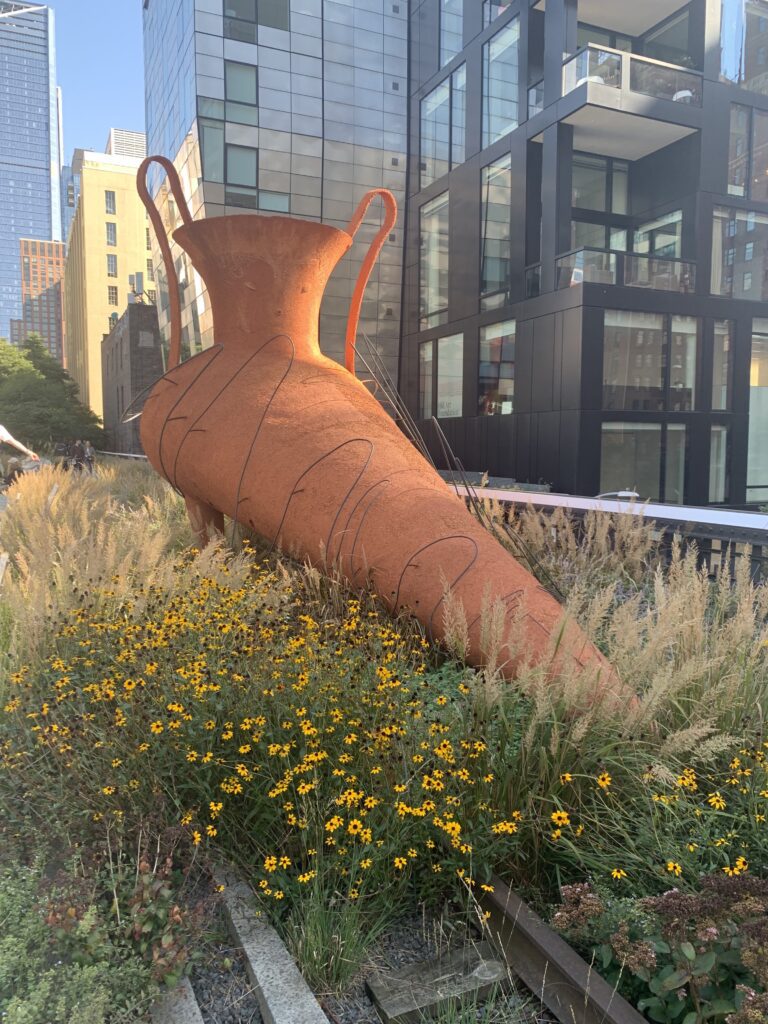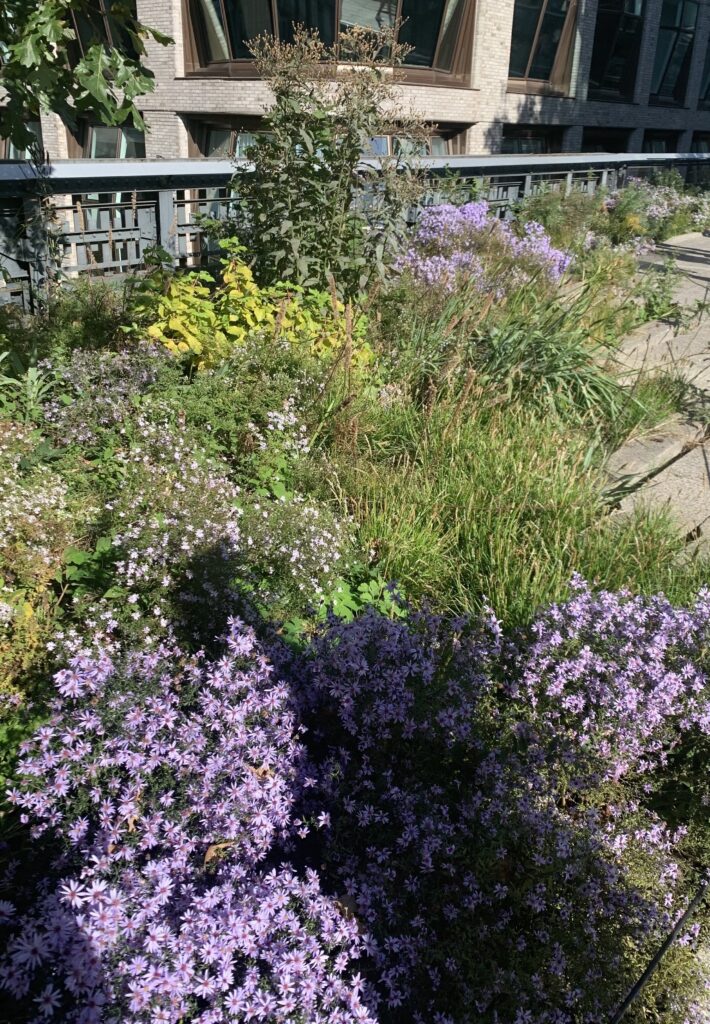By Tom Story
Opening in 2009, the High Line has become one of the most beloved parks in New York for tourists and locals alike. It brings the urban and natural together while finding a second life for an abandoned elevated train line.
In 1933, the High Line was first opened for freight trains as a safety measure to better separate pedestrians from the train lines on Manhattan’s west side and quickly became a crucial part of the city’s infostructure for many decades until the 1960s when the rise of trucking made the High Line increasingly obsolete. Eventually, it stopped being used in the 80s, and almost immediately, there were calls to demolish or repurpose the structure. However, it would take years for any concrete action to occur.

Thanks to the High Line’s years of disuse, plants began to sprout up along the abandoned tracks, and soon, much of the structure was covered in greenery, which, in turn, caused a growing push to turn it into parkland. This movement was led mainly by Joshua David and Robert Hammond, who founded a conservancy called Friends of the High Line in 1999, which continues to oversee the preservation and maintenance of the park. Despite the establishment of the conservancy in the 90s, it would still take another ten years until the park was fully approved and opened, with an initial section between Gansevoort and 20th Streets opening in 2009. Since then, the rest of the old rail line has been incorporated into the park, while additional sections have been added to connect the High Line to other significant public spaces in the city, such as Hudson Yards and the Moynihan Train Hall.
Stretching 1.45 miles from Gansevoort Street in the Meatpacking District to Hudson Yards around 30th Street in Midtown, the park twists and turns through both low- and high-rise buildings, reflecting many of the various architectural styles in Manhattan. Midtown’s enormous skyscrapers loom closer as one walks north through the park. In contrast, heading south, the park passes through the many converted warehouses of the Meatpacking District, modern apartment buildings in Chelsea, and the classic 19th-century New York City townhouses of the West Village. A park designed for walking through rather than sitting in, the High Line has several distinct sections as one walks through. At some points, the pathway is extensive, and there is little to no greenery at all, while, in other sections, the walkway is merely a few feet wide with dense vegetation surrounding it. There is even a section where the pathway is raised above the level of the old train line, leaving the “ground” entirely for plant life.

The general inspiration for the gardens along the High Line was the naturally occurring plant life that emerged on the rail lines after it closed. Therefore, the gardens comprise plants native to the Northeastern US that could have grown naturally in the area. The park has sixteen distinct gardens; some areas have been left intentionally wilder, intended to reflect how the rail line looked when it was empty, while other sections are far more meticulously maintained and manicured. Another source of inspiration for the various gardens was the immediate surrounding areas of each section of the park. For example, portions of the High Line, which are tightly crammed between buildings, feature plants that are specifically more receptive to growth in the shade, while wetland-style gardens were grown on sections of the park that are well exposed to the Hudson River. It all shows what a thoughtfully designed bit of parkland the High Line is. The city could likely have afforded to plant any greenery in the park. Still, instead, an active effort was made to ensure that the park functions almost like a nature reserve that could thrive even without human intervention.

One thing that struck me while walking through the High Line was how many of the buildings around the park appear to have used it as inspiration and feature large, grassy garden spaces and greenery built into the walls and on the roof, almost as though they were private extensions of the park itself. It had been a few years since I had walked along the High Line. I don’t remember so many buildings surrounding Chelsea and the Meatpacking District that were so clearly influenced by the park. Seeing how the park had so clearly and directly influenced its surrounding areas was exciting. Despite all the tourist traffic passing through the park, it made me think about what a nice (though certainly costly) place to live it would be. Those neighborhoods lack other large green spaces, but the High Line and surrounding buildings made the area feel much less intensely urban than other areas of Manhattan.

Tell us about gardens you have discovered this summer in your city/town at [email protected]. We would love to hear from you.
Here to help us all become gardeners and make the world greener.
